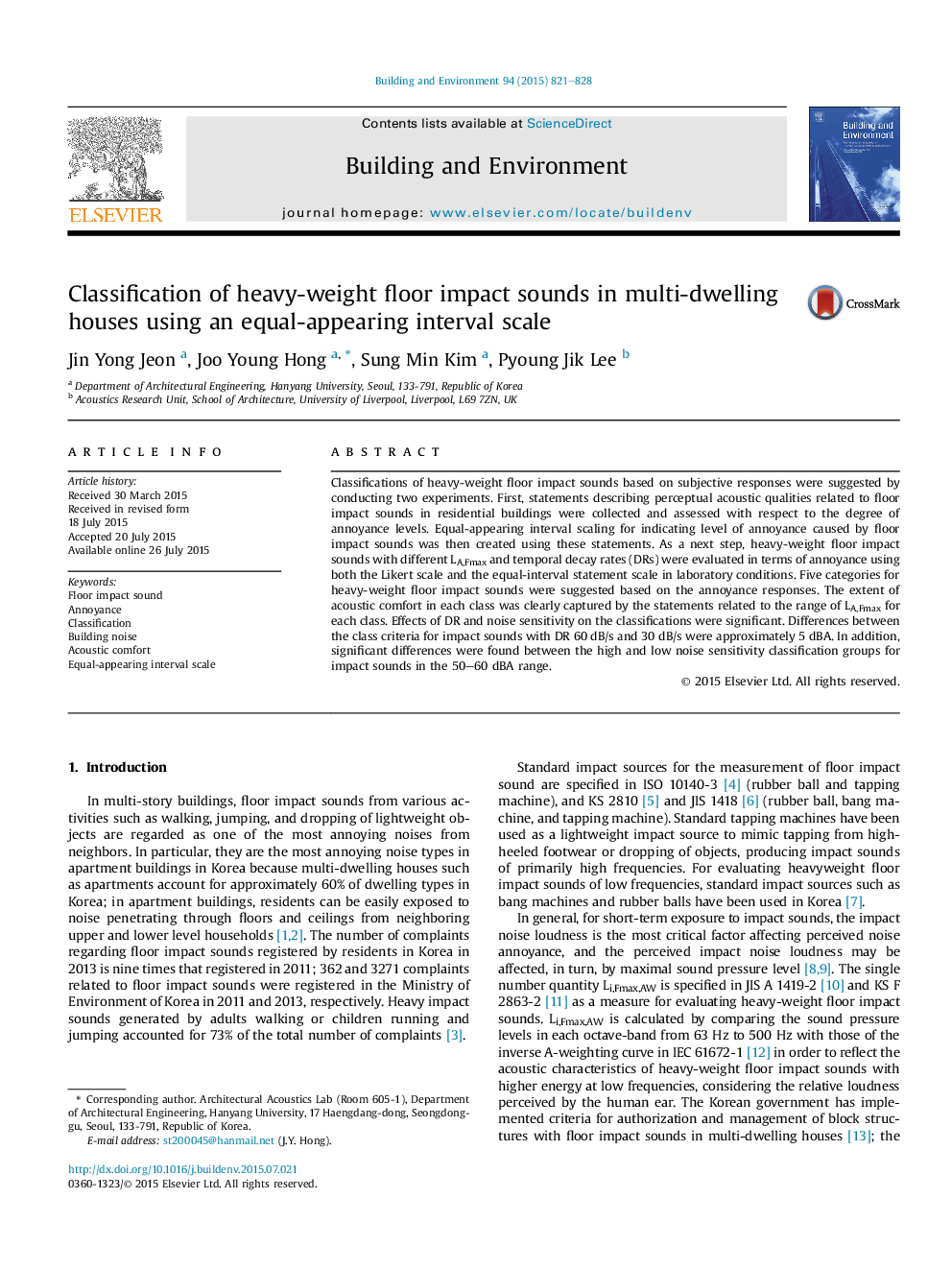| Article ID | Journal | Published Year | Pages | File Type |
|---|---|---|---|---|
| 247884 | Building and Environment | 2015 | 8 Pages |
•Equal-appearing interval scales describing attitudes toward noise perception of floor impact sounds were developed.•Classification of heavy-weight floor impact sounds was suggested based on subjective responses to noise.•Decay rate of impact sounds and noise sensitivity significantly affected the classification outcomes.
Classifications of heavy-weight floor impact sounds based on subjective responses were suggested by conducting two experiments. First, statements describing perceptual acoustic qualities related to floor impact sounds in residential buildings were collected and assessed with respect to the degree of annoyance levels. Equal-appearing interval scaling for indicating level of annoyance caused by floor impact sounds was then created using these statements. As a next step, heavy-weight floor impact sounds with different LA,Fmax and temporal decay rates (DRs) were evaluated in terms of annoyance using both the Likert scale and the equal-interval statement scale in laboratory conditions. Five categories for heavy-weight floor impact sounds were suggested based on the annoyance responses. The extent of acoustic comfort in each class was clearly captured by the statements related to the range of LA,Fmax for each class. Effects of DR and noise sensitivity on the classifications were significant. Differences between the class criteria for impact sounds with DR 60 dB/s and 30 dB/s were approximately 5 dBA. In addition, significant differences were found between the high and low noise sensitivity classification groups for impact sounds in the 50–60 dBA range.
